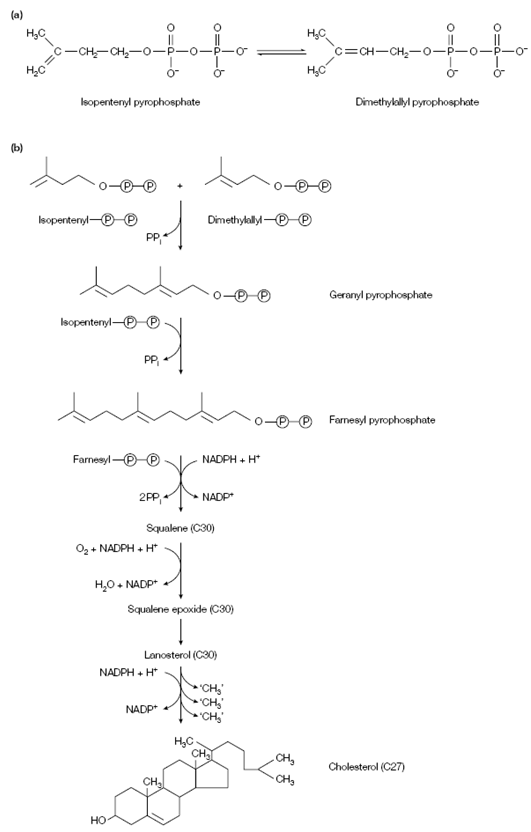Regulation of cholesterol biosynthesis:
Cholesterol can be gained either from the diet or it can be synthesized de novo, majorly in the liver. Cholesterol is transported round the body in lipoprotein particles. The rate of synthesis of cholesterol is dependent on the cellular level of cholesterol. The High levels of cholesterol and its metabolites control cholesterol biosynthesis through:
- opinion-inhibiting the activity of HMG CoA reductase an enzyme that catalyzes the committed step in cholesterol biosynthesis;
- reducing the amount of HMG CoA reductase through reducing the synthesis and translation of its mRNA;
- reducing the amount of HMG CoA reductase through raising its rate of degradation.
Additionally, HMG CoA reductase, like acetyl CoA carboxylase in fatty acid synthesis, is inactivated through phosphorylation through an AMP-activated protein kinase, retained in this form under the influence of glucagon in during starvation.
HMG CoA reductase can be inhibited therapeutically through administering the drug lovastatin, based on the fungal products compactin and mevinolin that competitively inhibit the enzyme and therefore decrease the rate of cholesterol biosynthesis. Thus, these compounds are routinely used for the treatment of hypercholesterolemia (high levels of blood cholesterol).

Figure: Synthesis of squalene and cholesterol from isopentenyl pyrophosphate. (a) Isomerization of isopentenyl pyrophosphate to dimethylallyl pyrophosphate; (b) synthesis of cholesterol.

Figure: Structures of the bile salts (a) glycocholate and (b) taurocholate.